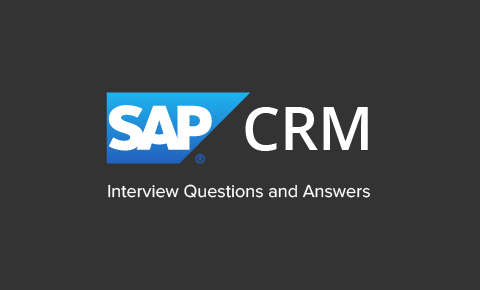Here, we have listed all the Top SAP FICO Interview Questions and Answers for Freshers & Experienced. All the best for your interview Preparation.
[dt_sc_toggle title=What are the Main SAP FICO Components? The SAP FICO (Financial Accounting and Controlling) module consists of several components that work together to manage financial processes and provide comprehensive financial reporting. The main components of SAP FICO include: General Ledger (GL): The GL component manages the overall financial accounting for the organization, including the recording and tracking of financial transactions, balance sheet and profit and loss statement preparation, and financial reporting. Accounts Payable (AP): The AP component handles the management of vendor invoices, payment processing, and vendor account reconciliation. It tracks and manages all outgoing payments to vendors. Accounts Receivable (AR): The AR component manages customer invoices, payment receipts, and customer account reconciliation. It tracks and manages all incoming payments from customers. Asset Accounting (AA): The AA component is responsible for managing fixed assets and their lifecycle, including asset acquisition, depreciation calculation, retirement, and asset valuation. Controlling (CO): The CO component focuses on cost accounting and internal controlling within the organization. It includes various sub-components such as Cost Element Accounting, Cost Center Accounting, Profit Center Accounting, and Internal Orders. Bank Accounting (BA): The BA component handles bank-related transactions, including bank reconciliation, bank statement processing, and cash management. Travel Management: The Travel Management component facilitates the management and processing of travel expenses, including travel requests, expense claims, and reimbursement. Funds Management (FM): The FM component enables budgeting, funds allocation, and monitoring of funds within the organization. Special Purpose Ledger (SPL): The SPL component allows organizations to create customized financial reporting based on specific requirements or regulatory compliance
[dt_sc_toggle title=What is the company code in SAP? The company code in SAP represents an independent legal entity or a company. It is used to generate financial statements such as profit and loss statements, balance sheets, etc.
[dt_sc_toggle title=For a Company Code, how many currencies can be configured? A company code in SAP can have three currencies configured: one local currency and two parallel currencies.
[dt_sc_toggle title=What is a “year shift” in SAP calendar? A “year shift” is not applicable in the SAP calendar. The system does not recognize a broken fiscal year.
[dt_sc_toggle title=Is the business area at the company code level? No, the business area in SAP is at the client level, which means multiple company codes can be assigned to the same business area. This allows for cross-company code reporting and analysis based on business areas.
Please review our previous updates on SAP FICO Interview Questions and Answers for Experienced Candidates. in 2024 [dt_sc_toggle title=How are input and output taxes handled in SAP? Input and output taxes are managed in SAP through tax procedures and tax codes. Tax amounts can be either expensed out or capitalized to stocks, depending on configuration and requirements.
[dt_sc_toggle title=What is a posting key and what does it control? A posting key is a two-digit numerical code used to determine the transaction type in a line item. It controls account types, debit or credit postings, and the field status of the transaction.
[dt_sc_toggle title=What is the default exchange rate type used in SAP transactions? The default exchange rate type used for all SAP transactions is “M” (Average Rate).
[dt_sc_toggle title=What are the Most used SAP FICO TCodes? Here are some of the most commonly used SAP FICO transaction codes (TCodes):
[dt_sc_toggle title=What is the use of Financial Statement Version (FSV) in SAP? Financial Statement Version (FSV) is a reporting tool in SAP. It is used to extract final accounts like the Profit and Loss Account and Balance Sheet. Multiple FSVs can be used to generate outputs for external agencies, such as banks and statutory authorities.
[dt_sc_toggle title=What are the methods of vendor invoice payments in SAP? Vendor invoice payments can be made manually without any output medium, such as cheques, or through automatic methods like Data Medium Exchange (DME), cheques, or wire transfers.
[dt_sc_toggle title=How are capital Work in Process (WIP) and assets accounted for in SAP? Capital Work in Process (WIP), also known as Assets under Construction, is represented under a specific asset class in SAP. Depreciation is typically not charged for WIP. The costs incurred for constructing a capital asset can be booked to an internal order, and through settlement procedures, they can be posted to an Asset Under Construction.
[dt_sc_toggle title=What are the customizing prerequisites for document clearing? The customizing prerequisite for document clearing involves checking cleared and uncleared items through open item management. Open item management manages outstanding accounts, such as accounts payable and accounts receivable. It ensures that invoices and payments are appropriately matched and cleared.
[dt_sc_toggle title=What are parallel and local currencies in SAP? Each company code in SAP can have a local currency, which is the currency entered in the company code data. Additionally, two parallel currencies can be configured for international business transactions. The parallel currencies can be used for reporting purposes and can include group currency and hard currency.
[dt_sc_toggle title=How are tolerances for invoice verification defined? Tolerances for invoice verification in SAP determine whether invoices are automatically posted, placed on hold for matching or tax verification, or require manual intervention. Tolerances can be set for small differences, moving average price variances, quantity variances, and price variances during logistic invoice verification. Where can you use internal orders in SAP? Internal orders are used to track costs and expenses on a short-term basis. They are typically created to monitor specific projects, campaigns, or events within an organization. Internal orders help capture and control costs associated with these activities.
[dt_sc_toggle title=In Asset Accounting, what are the organizational assignments? In Asset Accounting, the highest node is the chart of depreciation, which is then assigned to the company code. All depreciation calculations and asset-related data are stored within the chart of depreciation.
[dt_sc_toggle title=What is a credit control area in SAP? A credit control area in SAP is used to manage the credit limits for customers and mitigate the risk of bad debts and outstanding receivables. It allows companies to set credit limits and block deliveries based on a customer’s credit limit and accounts receivable balance.
[dt_sc_toggle title=What are posting period variants? Posting period variants in SAP control which accounting periods are open for posting and ensure that closed periods remain balanced. They define the periods during which transaction figures are updated in the fiscal year.
[dt_sc_toggle title=What is a short-end fiscal year? A short-end fiscal year occurs when there is a change from a normal fiscal year to a non-calendar fiscal year or vice versa. This change often happens when an enterprise becomes part of a new corporate group.
[dt_sc_toggle title=What is the purpose of “Document type” in SAP? The purpose of “Document type” in SAP includes: Defining the number range for documents Controlling the types of accounts that can be posted, such as assets, vendors, customers, or normal GL accounts Enabling the reversal of entries
”What
What
How
What
What
What
What
What
What
What
In this Video,we’ve New Updated SAP FICO Interview Questions and Answers for freshers & Experienced 2023.
What
What
What
What
What
”Is
What
How
What
What





